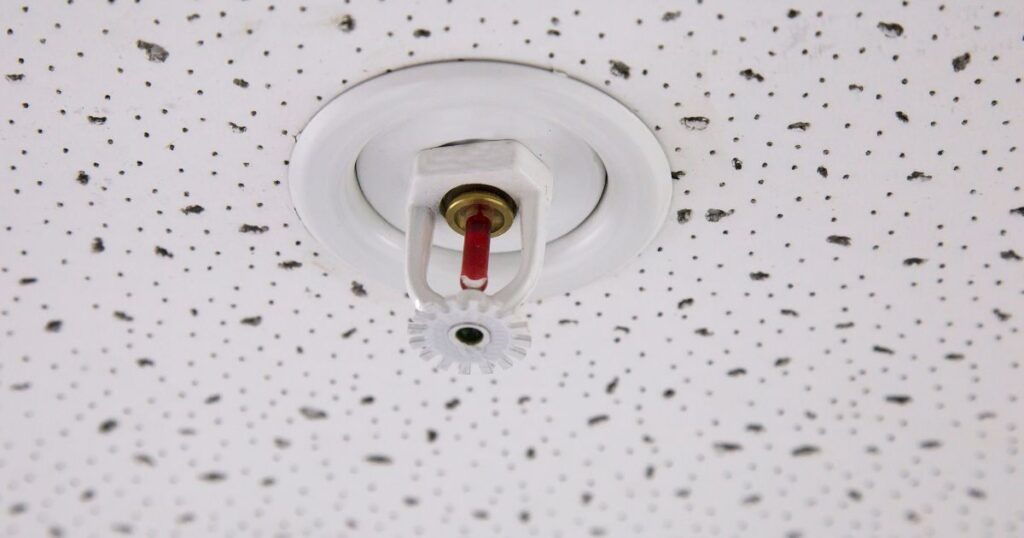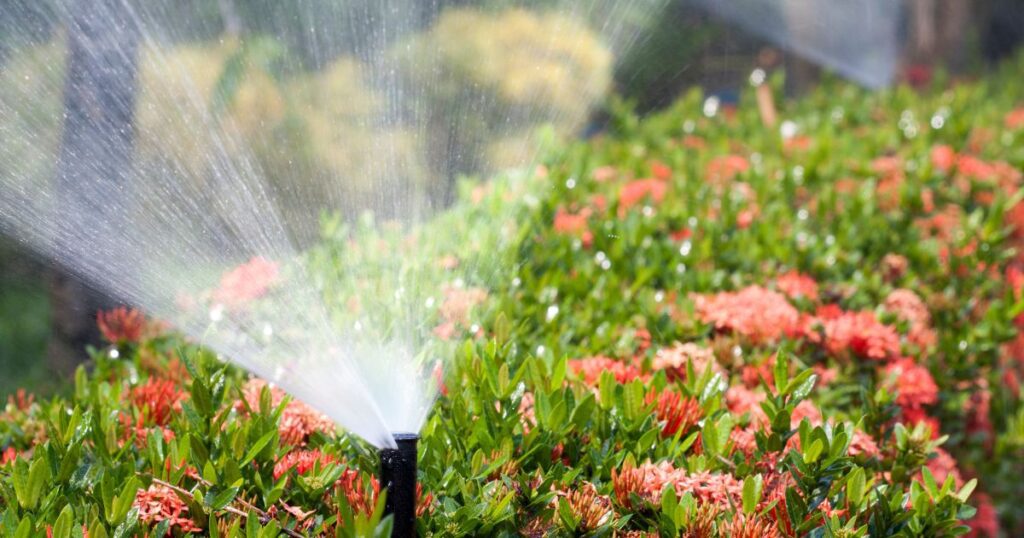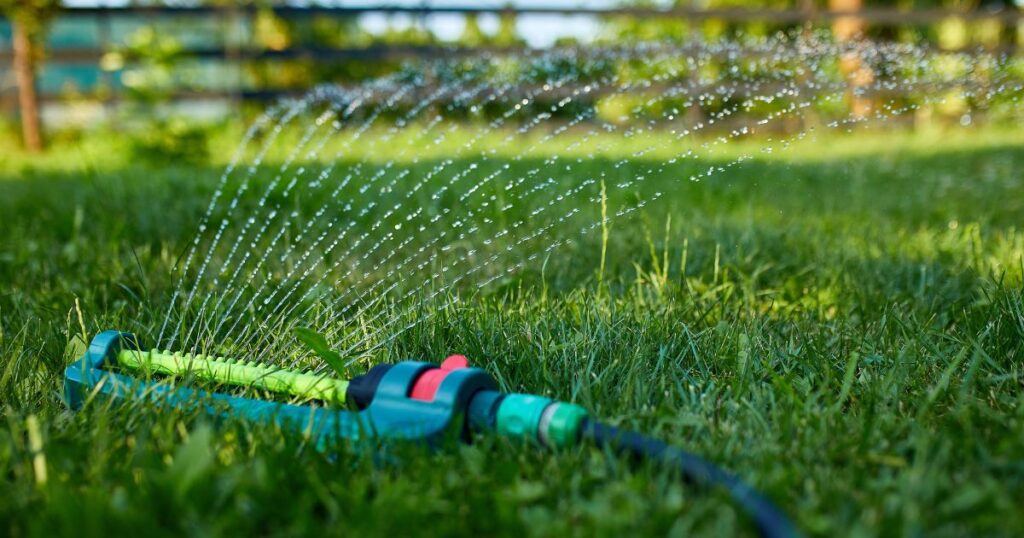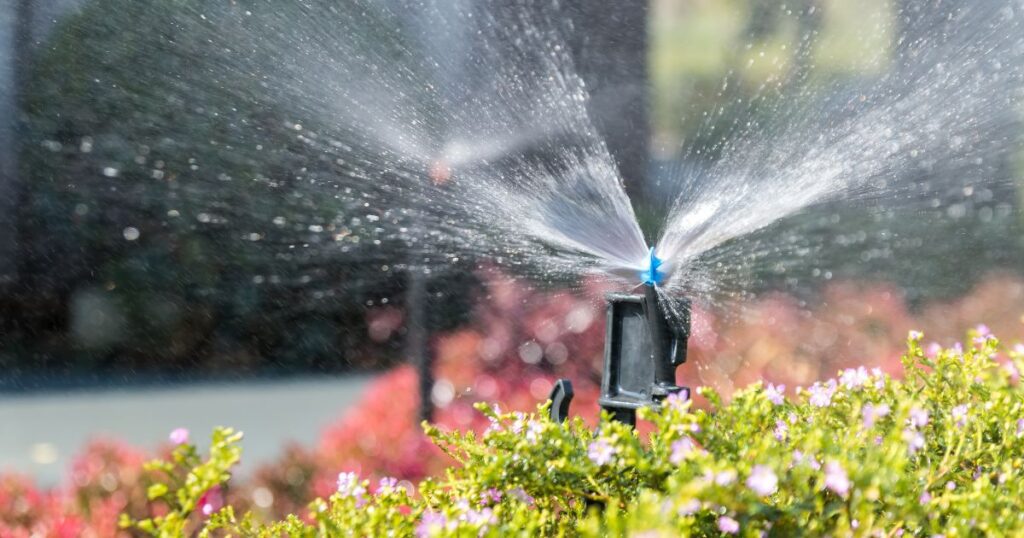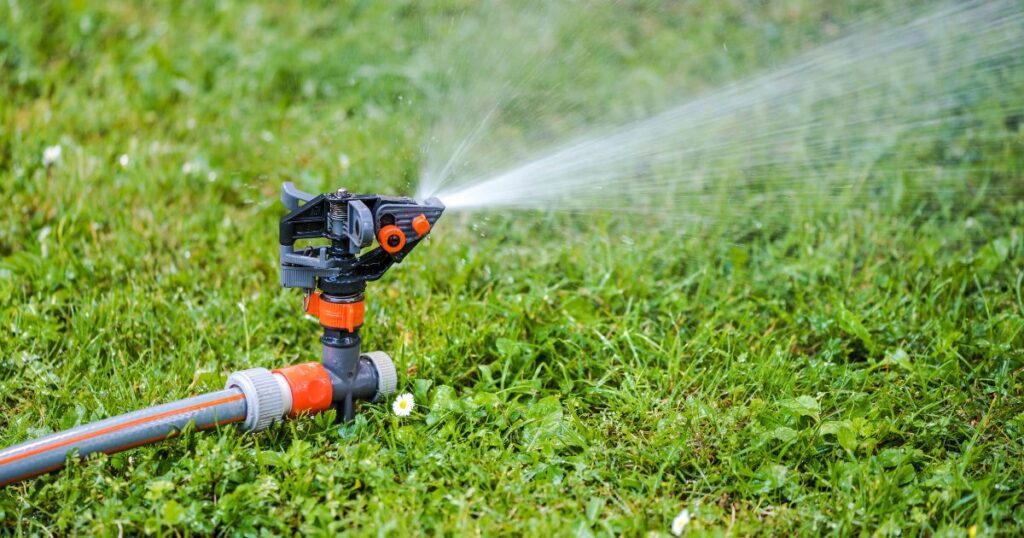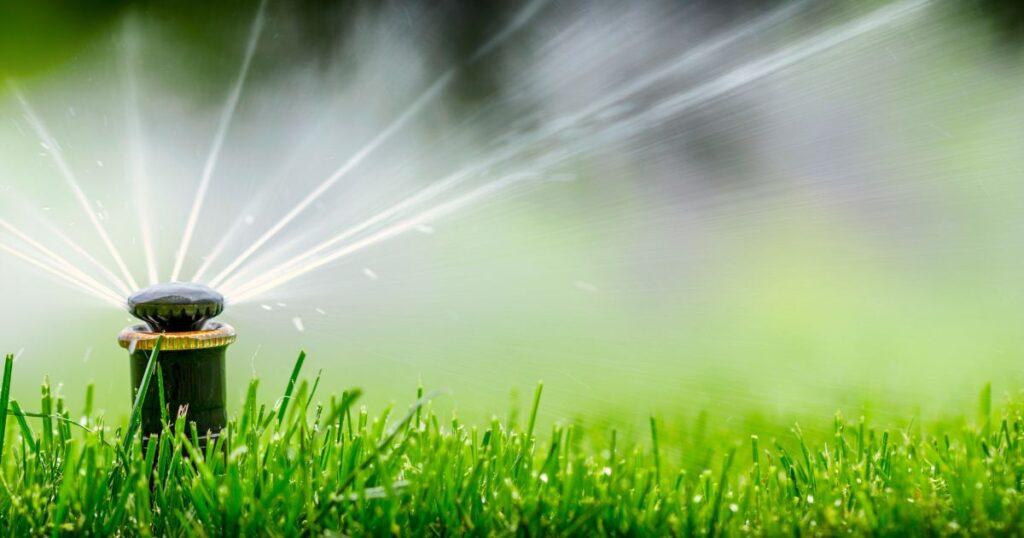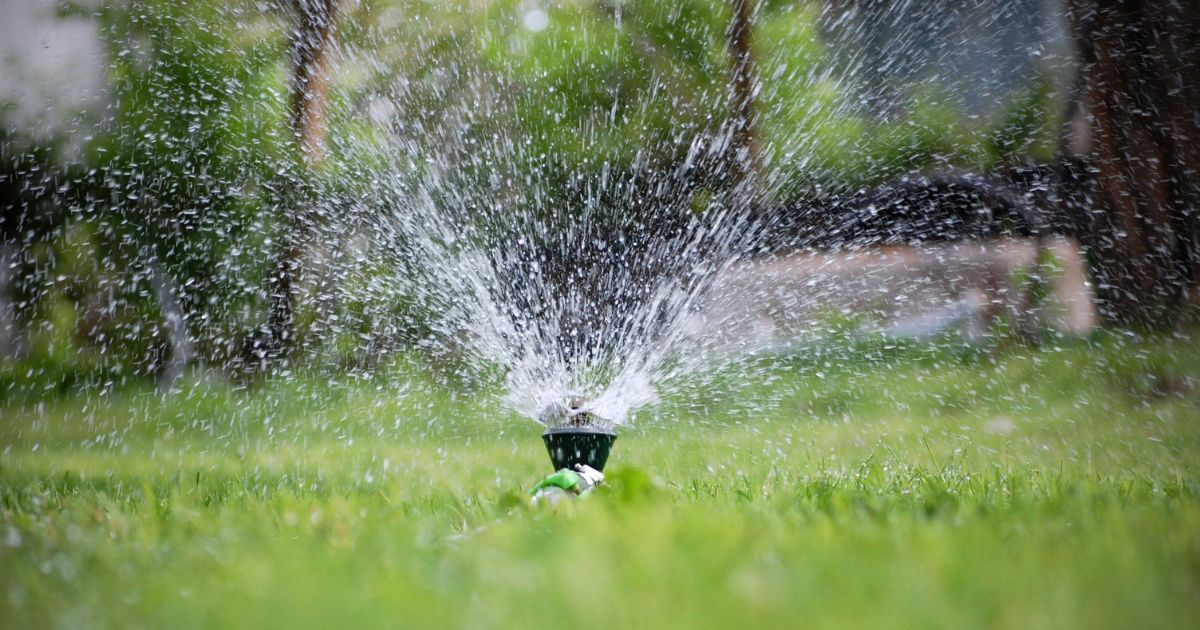
Are you tired of playing hide-and-seek with your sprinkler valves? Have no fear, for we have some tricks up our sleeve to help you locate those elusive buried valves! In this guide, we’ll unravel the mystery and reveal the secrets to finding buried sprinkler valves. Get ready to embark on an adventure that will make you a master of valve detection. So put on your detective hat, and let’s dig in to uncover the hidden treasures of your sprinkler system!
To find buried sprinkler valves, start by locating the valve box, which is usually a rectangular or circular cover in the ground. Use a valve locator or metal detector to trace the path of the valve wires from the controller to the valve box. Once you’ve identified the valve box, carefully dig around it to uncover the buried sprinkler valves.
The Importance of Finding Buried Sprinkler Valves
As a homeowner with an underground sprinkler system, it is essential to know where your valves are located. The valves regulate water flow and ensure that each zone of your lawn or garden receives an adequate water supply. A damaged or malfunctioning valve can cause water waste or prevent certain areas from receiving enough water.
Locating your buried sprinkler valves can also help you avoid costly repair bills when something goes wrong with the system. If you have an issue with one zone but cannot find the corresponding valve, you may end up having to dig up your entire yard in search of it – costing both time and money.
The Challenges of Locating Buried Sprinkler Valves
The first obstacle when searching for buried sprinkler valves is that they are often located underground in hard-to-reach places. This means digging through soil and rocks until you reach the valve. In addition, some older systems may not have accurate maps or plans indicating where each valve is located – making the search more difficult for homeowners who did not install the system themselves.
Another challenge lies in identifying which objects underground are actually sprinkler valves versus other metallic objects such as pipes or wires. Metal detectors can be helpful in locating metal objects under the soil, but it is important to differentiate between sprinkler valves and other objects before digging.
There is always the risk of damaging other pipes or electrical lines when digging for buried sprinkler valves. Homeowners should take caution when digging and consider using a valve locator device to minimize the risk of causing further damage.
Finding buried sprinkler valves can be a challenging but necessary task for homeowners with underground sprinkler systems. Knowing the importance of locating these valves and understanding the challenges involved can help homeowners avoid unnecessary frustration and repair costs in the future.
Preparation
Gather Necessary Tools
Before starting the search for buried sprinkler valves, it is important to gather the necessary tools. The three most crucial tools are a metal detector, shovel, and valve locator device.
Metal detectors help detect metallic objects buried underground. When searching for valves, they can be used to identify areas where pipes or valves may be located.
Make sure to choose a metal detector that has a good depth range and sensitivity settings to ensure accurate readings. A shovel is another important tool that will be used to dig up the soil around the suspected location of the valve.
It is recommended to use a sturdy and sharp shovel to make digging easier and more efficient. A valve locator device is another useful tool that sends an electrical signal through the ground to detect buried valves.
This device works by tracing wires inside irrigation systems that lead up to each valve. Make sure you read and understand how your particular model works before attempting to use it.
Turn off Water Supply
Before digging, always turn off the water supply leading into your irrigation system. Failure to do so could lead to accidental flooding and water damage in your yard or home.
Locate your main water shut-off valve, which can typically be found near where your water meter is located. Once you have located this valve, turn it off by turning it clockwise until it tightens completely.
Before proceeding with any further steps, double-check that all valves have been turned off properly by testing them out manually. Open each individual sprinkler zone one at a time from your system’s control panel until no water comes out anymore.
Analyze Your System Map
After gathering necessary tools and ensuring safety measures have been taken care of, analyze any available system maps in order to get an idea of where exactly certain zones or sprinklers are located on your property. This will give you a better idea of where certain valves could be located and therefore which areas of the lawn to focus your search on.
System maps can often be found in the control panel or at the main water shut-off valve location. If no map is available, consider creating one before beginning your search.
It’s important to take note of any landscaping or construction that has taken place since the original installation of your irrigation system. Additionally, if you have moved into a new home, try to get an idea from previous owners or your property inspector about where valves were previously situated.
Identify Zones
Once you have analyzed the system map for information regarding zones and sprinklers, it is important to identify zones manually by assessing sprinkler heads on your lawn. Each zone is controlled by its own valve, which means that finding each zone’s valve will lead to successful searches for specific buried sprinkler valves.
To identify zones, walk around your lawn and manually turn on each separate zone using either a control panel or remote commands. Watch each sprinkler head in order to determine which ones are being activated during that time.
Mark Sprinklers
After identifying zones, mark all sprinklers with marking flags so they will not be accidentally damaged during digging. These flags should be placed near each sprinkler head at ground level so they remain visible throughout the digging process.
It’s also useful when manually turning off/on individual sprinkler heads because it helps you keep track of which heads have been tested already when marking them with a flag. Taking these preparatory steps can ensure success when searching for buried sprinkler valves as well as ensure safety measures are taken care of properly prior to digging.
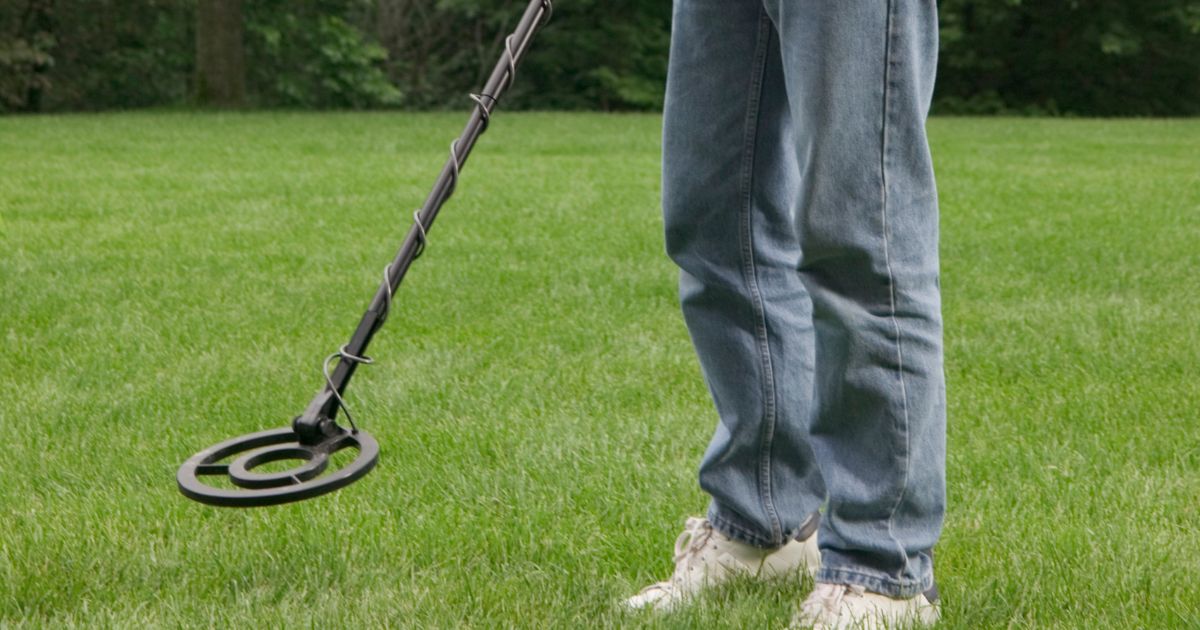
Using a Metal Detector
Scan the Ground for Metallic Objects
The most common method to find buried sprinkler valves is by using a metal detector. This tool helps detect the presence of metallic objects underground by emitting an electromagnetic field that penetrates the soil.
The technique involves walking over the area where you suspect the valves are buried and listening for a beep or visual signal on the metal detector to indicate that there is something metallic under the ground. When scanning for sprinkler valves, it is essential to move slowly and methodically over each area.
Walk in straight lines back and forth, overlapping each path slightly to ensure that you do not miss any spots. You should also take note of any signals from nearby pipes, wires, or other metallic items that could affect your search results.
RELATED: How To Split A Zone In An Existing Sprinkler System
Differentiate Between Sprinkler Valves and Other Metallic Objects
While using a metal detector is an effective way to find buried sprinkler valves, it can also pick up other metallic objects like rocks, nails, bolts, and other debris that may share similar conductive properties with valve bodies. It’s important to differentiate between these objects so you can locate your target accurately. One way of distinguishing between valve bodies and other metal objects is by checking for a signal consistently repeating in one area.
Unlike random signals caused by scraps or nails scattered around, valve signals would be more specific since they will appear together with pipes running through them. Another way to confirm whether an object picked up by your metal detector is indeed a buried sprinkler valve is to feel around with your hand underneath where it shows positive readings on your device.
If you sense something circular beneath the surface that extends downwards further than what seems like small garbage or rocks would – then chances are good: this could be a valve body! If in doubt about whether or not what you’ve found constitutes a sprinkler valve, you can always probe the area to identify pipes and use that information to make a more educated assumption.
Using a Valve Locator Device
How Valve Locator Devices Work
Valve locator devices are designed to locate buried valves by sending an electrical signal through the ground. The device works by using two parts: a transmitter and a receiver.
The transmitter sends electrical signals to the receiver, which then detects the location of the valve in question. Valve locator devices work best on valves made of metal, as they can pick up metal signals more easily.
Step-by-Step Instructions on How to Use a Valve Locator Device
Using a valve locator device is relatively simple and straightforward. Follow these step-by-step instructions to use one efficiently:
1. Start by turning off all sprinkler systems and hoses that might interrupt your search.
2. Attach the transmitter clip to the main valve or water line (the pipe that leads from your water meter to your home). If you cannot find this, clip it onto any nearby metal object.
3. Turn on the transmitter and set it to its maximum range while holding it about one foot above ground level.
4. Slowly move around in increasing circles near where you believe the buried sprinkler valve is located while holding onto the receiver.
5. Wait for distinct peaks on the display screen of the receiver as you pass over pipe areas of interest.
6. When you get closer, reduce the range setting and change direction often until you get within 6 inches (15 cm) or so of where you think it is located.
7. Once you have narrowed down its position, mark this spot with spray paint or chalk, where it may locate easily again.
Troubleshooting Tips
Sometimes even when using a valve locator device correctly, it can be challenging to pinpoint exactly where buried sprinkler valves are located because there may be other metal objects nearby, resulting in false readings or interference from another wiring. If you encounter these issues, remember to:
- Turn off any electrical items in the area
- Move away from any other metal objects
- Reset your device and begin the process again while calibrating for errors
Precautions to Take When Using a Valve Locator Device
When using a valve locator device, it is essential to take some precautions to avoid injury or damage. Before starting, ensure that:
- Sprinkler lines are not pressurized
- There is no standing water around or near buried valves.
- You have checked with your local utility office to ensure there are no underground pipes or wires.
Moreover, ensure you are wearing protective gloves and shoes while using the device. These measures will help prevent injuries and damage that may occur during the search.
The Advantages of Using a Valve Locator Device
Using a valve locator device can help find buried sprinkler valves more accurately and efficiently than other methods like metal detectors. They are reliable devices that offer precise location measurements. Using one can save time and reduce frustration by finding valves faster and more easily than trying random digging trials.
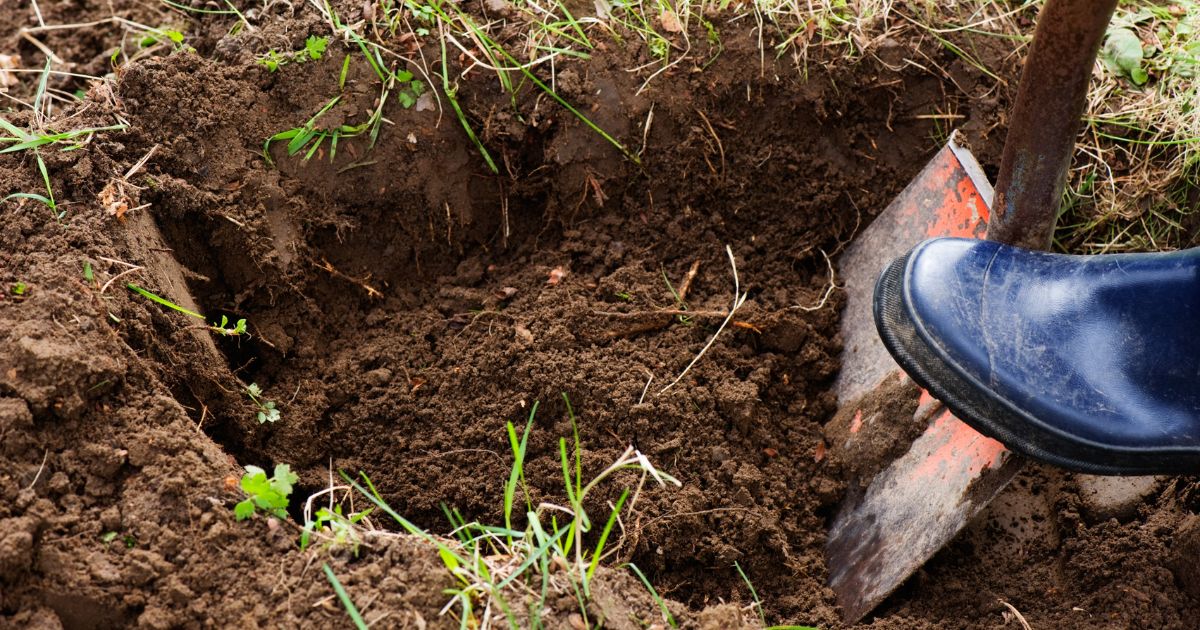
Digging Techniques
Starting Small and Gradually Increasing the Size of the Hole
One of the biggest mistakes people make when searching for buried sprinkler valves is digging too large of a hole right away. This can damage not only your lawn or garden but also potentially damage pipes or electrical lines that may be near the valves. Start with a small hole, around six inches in diameter, and gradually increase the size as you get closer to the valve.
When using a valve locator device, mark where it indicates there is a valve and then dig around it. Once you have located the valve, carefully remove dirt from around its edges until you have enough space to access it easily.
If you are using other methods, such as following visible pipes or using a probe rod, mark where they lead and start digging at that spot. Use caution while digging to prevent damaging any pipes or electrical lines.
Emphasize Caution When Digging Near Pipes or Electrical Lines
When searching for buried sprinkler valves, it is essential to be cautious when digging near pipes or electrical lines to prevent damage. Before starting your search, make sure you know where these lines are in your yard. If necessary, hire a professional utility locator service to come out and mark them for you.
To avoid damaging any pipes or electrical lines while digging, use hand tools such as shovels instead of power tools like backhoes. Be careful when removing dirt from around the valves to prevent accidentally hitting any nearby pipes.
If you accidentally hit a pipe or electrical line while searching for sprinkler valves, immediately turn off all power sources and water supply and seek professional help. Trying to fix the issue on your own could result in even more damage.
Remember that safety should always be your top priority when locating buried sprinkler valves on your property. Taking precautions will not only protect yourself but also your utility lines and your lawn or garden.
Other Methods
Following Visible Pipes
For those who are not too keen on using a metal detector or valve locator device, following visible pipes is another viable option to find buried sprinkler valves. This method involves looking for above-ground pipes that lead to the sprinkler system and then digging around them until you locate the valve.
This technique requires some basic knowledge of how the system is laid out. Typically, sprinkler systems are designed in zones, each with its own valve.
Therefore, it’s essential to know which zone you’re targeting to avoid unnecessary excavation. One tip for finding visible pipes is to look for areas where the grass is greener or taller than other areas of the lawn – this may indicate an area with more water supply from a nearby pipe leading to the sprinkler system.
Using a Probe Rod
Another alternative method that can be used instead of or in conjunction with metal detectors and valve locator devices is using a probe rod. A probe rod is a long metal rod that can be pushed into the ground, allowing you to feel around for buried objects such as pipes or valves.
Firstly, mark out where you think the line of pipe will run based on any visible covers or equipment at either end of the pipe and any other clues, as discussed in previous sections. Insert your probe rod vertically into the ground along this line at intervals until you hit something solid, indicating there’s an obstacle underfoot- potentially your sought-after valve cover.
Once you’ve found something solid, use your hands (while wearing gloves). Carefully remove enough soil around this point till you find what’s underneath- it could potentially be your valve cover! When inserting your probe rod, ensure it’s straight and vertical so there isn’t any curve that could change its direction once in contact with an object.
RELATED: How To Prime A Sprinkler Pump: Empowering Performance
Combining methods
It’s crucial to note that using a combination of these methods may be the best option to ensure that you locate a buried sprinkler valve. For example, if using a metal detector or valve locator device fails to locate the valve, you can switch to following visible pipes or using a probe rod. It is also worth noting that this process can take some time and patience.
The size and complexity of your sprinkler system will dictate how long it takes – perhaps only five minutes for a single-tap irrigation system or several hours for large commercial premises. Be prepared for this before starting work.
Professional Opinion
Some professional landscapers recommend using all three methods – metal detectors, probe rods, and following visible pipes – in conjunction with one another when searching for buried sprinkler valves. Doing so can help reduce the amount of time spent digging up unnecessary areas while increasing your chances of finding the valve quickly.
Another tip is to keep good records of where valves are located once found- including maps or other marking tools, as this will save time on any future maintenance jobs when valves need turning off again for repair works. This also helps if you decide one day that you want to make alterations or additions to the existing system- knowing where everything is located will be invaluable!
The Final Verdict
There are several alternative methods available for locating buried sprinkler valves if traditional methods like metal detectors and valve locator devices prove unsuccessful or unaffordable options. Following visible pipes around your garden, carefully probing with a probe rod, and combining these methods have all been shown to be effective ways to find hidden valves without excessive excavation costs or wasted labor hours. All options require careful attention and focus while carrying out tasks; however, each method can still require some guesswork, making it vitally important not just during digging but also after finding valves to record their locations accurately either via photography or documentation so future repairs or alteration will be made easier.
The Importance of Being Methodical
Recap key points from each section
In order to find buried sprinkler valves, it is important to be methodical. One approach involves preparing ahead of time, gathering all the necessary tools, and turning off the water supply. Another approach is to use a metal detector, which can help locate valves by scanning the ground for metal objects.
Alternatively, a valve locator device can be used to send an electrical signal through the ground. Regardless of the method used, proper digging techniques are important to prevent damage to pipes or electrical lines.
Starting small and gradually increasing the size of the hole is recommended. It is also important to exercise caution when digging near pipes or electrical lines.
Patient Persistence Pays Off
Encourage readers to take their time and be patient when searching for buried sprinkler valves
Searching for buried sprinkler valves can be a time-consuming process that requires patience and persistence. It may take several attempts before finally locating a valve.
It is important not to rush through this process because it could result in damage or inaccurate results. When searching for buried sprinkler valves, taking one’s time and being patient will pay off in the end.
Remember that there are multiple methods available for finding buried sprinkler valves, including using a metal detector, valve locator device, following visible pipes or using a probe rod. Try each method until one works best for you.
Frequently Asked Questions
How do I find my underground sprinkler valve box?
To locate your underground sprinkler valve box, start by looking for any visible signs, such as small mounds or depressions in the ground. You can also use a metal detector to help you find the valve box.
How do I find a buried water valve?
To find a buried water valve, you can start by checking the perimeter of your property for any visible water valve covers. If you’re unable to locate it visually, you can use a metal detector or contact a professional locator service to help you find the buried water valve.
How do I identify my sprinkler valve?
To identify your sprinkler valve, look for a rectangular or round valve box in your yard. Open the valve box and locate the valves inside. Each valve is typically labeled with the corresponding zone number or description.
How do you trace an underground sprinkler pipe?
To trace an underground sprinkler pipe, you can use a pipe locator device or a metal detector with a pipe detection feature. Start by identifying the general path of the pipe based on the sprinkler heads’ layout, then use the locator to track the pipe underground.
Where are sprinkler valves typically located?
Sprinkler valves are typically located in a valve box, which is buried underground and can be found near the main water supply line or the area where the sprinkler system branches off into different zones. The valve box is often positioned in a convenient and accessible location for maintenance purposes.
Should sprinkler valves be buried?
Yes, sprinkler valves are typically buried to protect them from environmental factors and ensure the system’s integrity. Buried valves are less prone to damage and are easier to access for maintenance and repairs.
A Final Word
After reading this article on how to find buried sprinkler valves, you should have gained an understanding of how challenging it can be but also realize that with some preparation and persistence, it is possible. Remember that patience is key when searching for these hidden gems.
Be sure to exercise caution around any potential hazards, such as electrical lines or pipes, so as not to cause any damage during your search. With these tips and tricks in mind, you’ll be able to locate buried sprinkler valves in no time!

